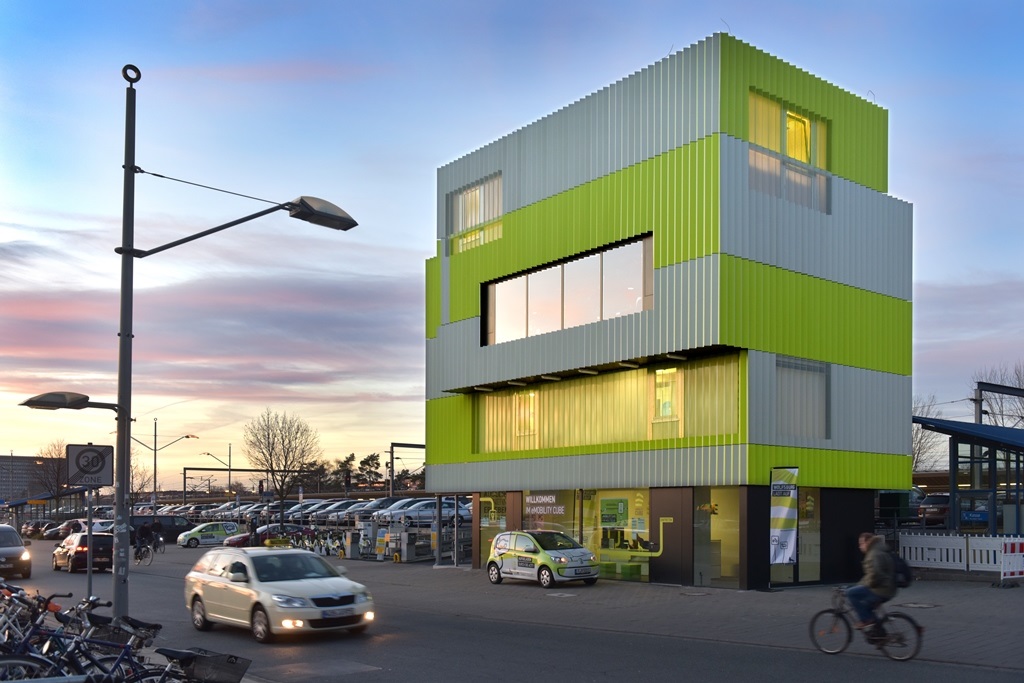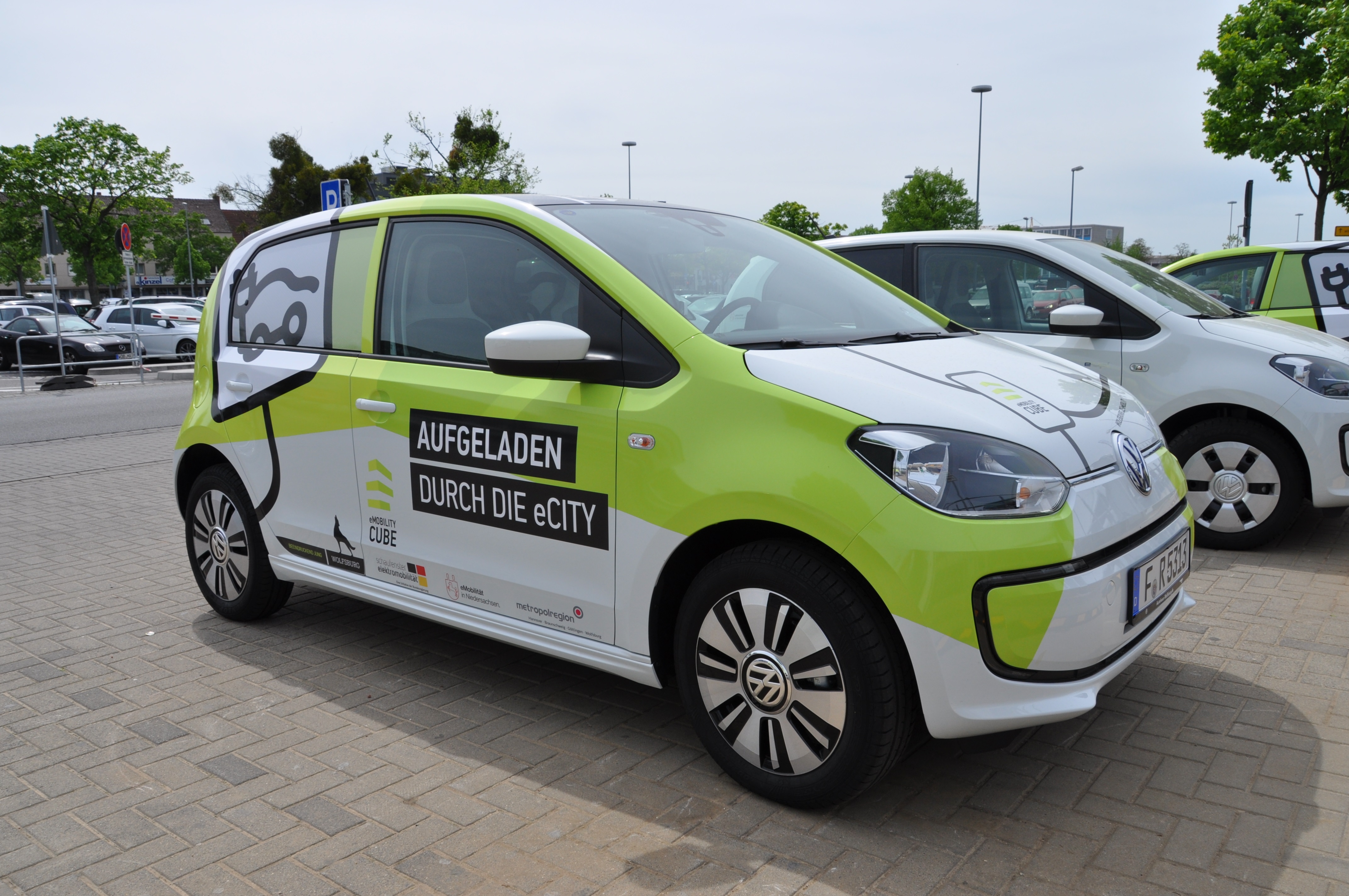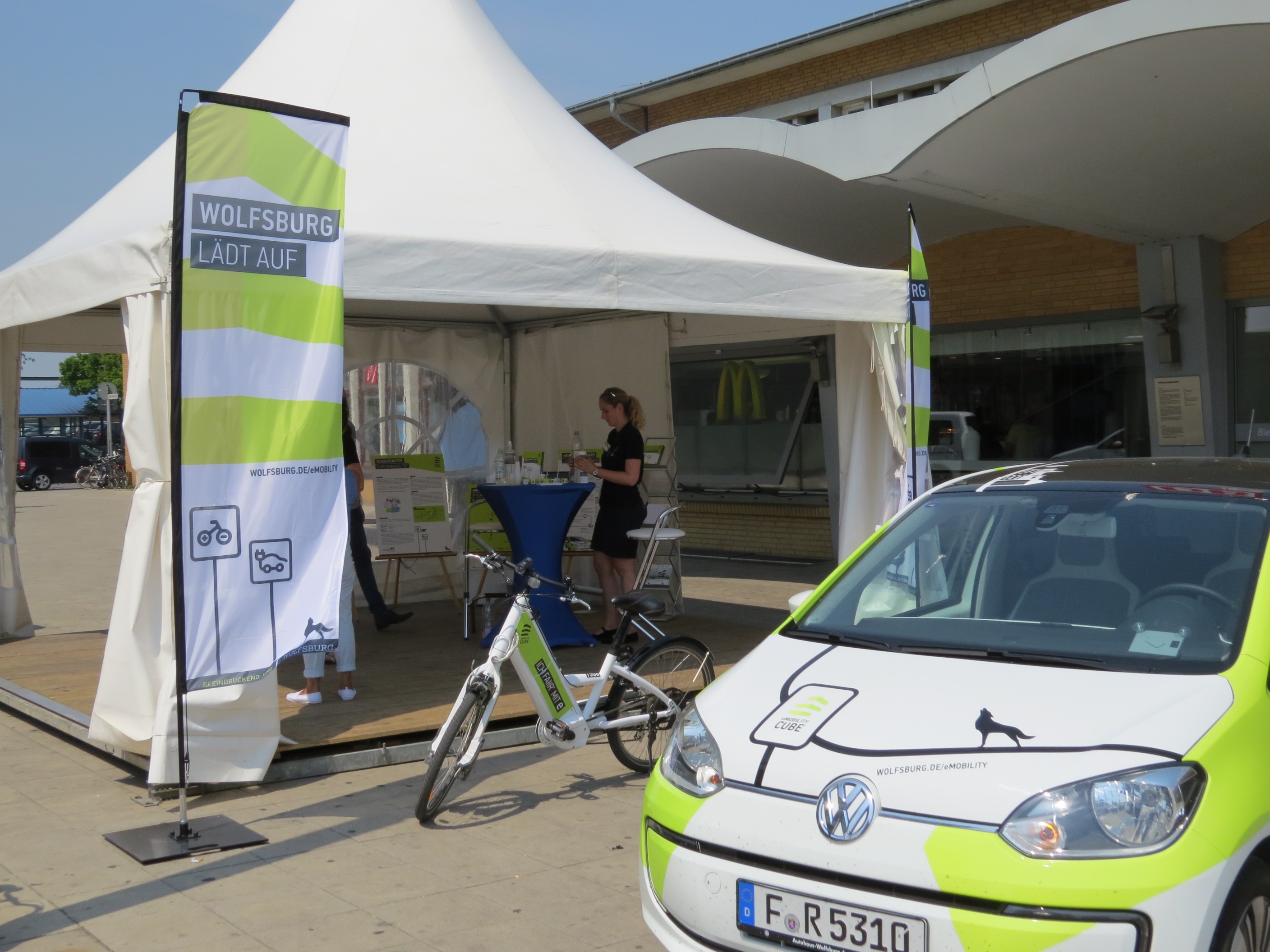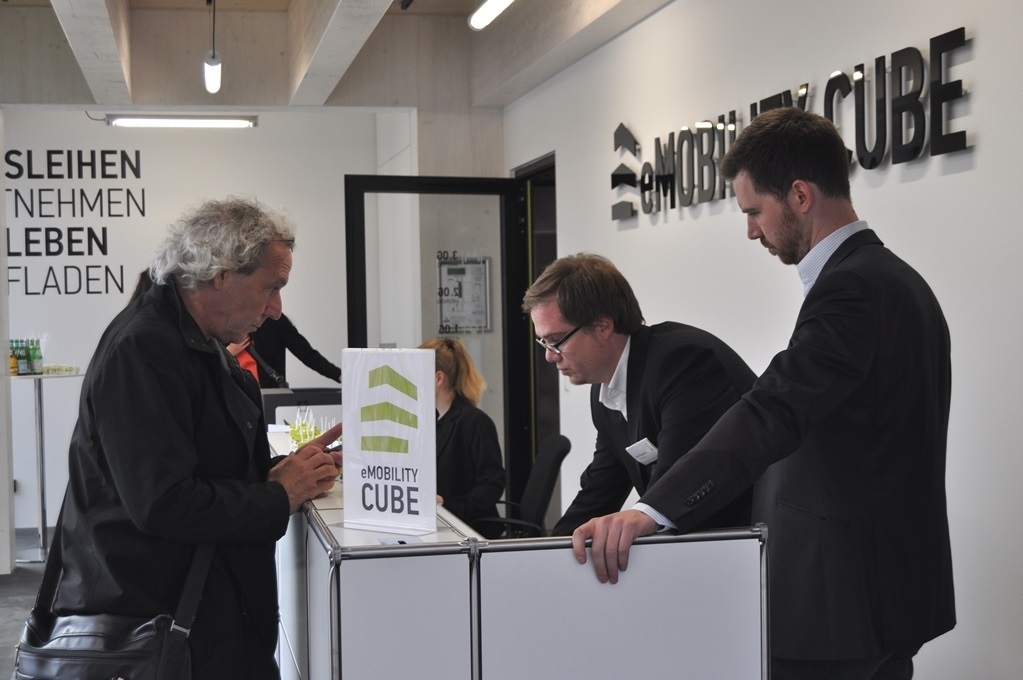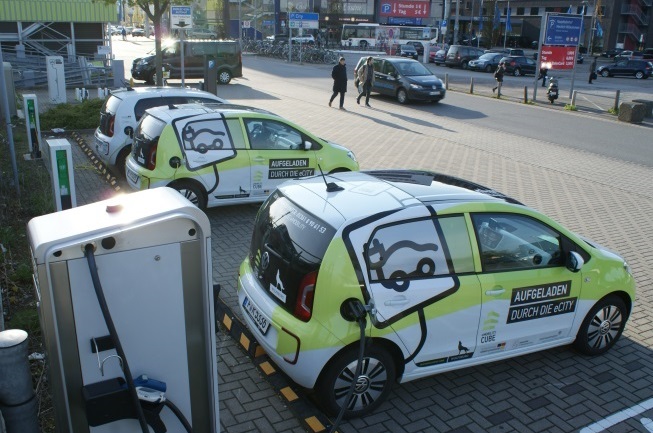E-mobility in Wolfsburg
Electric and digital into the mobility of tomorrow
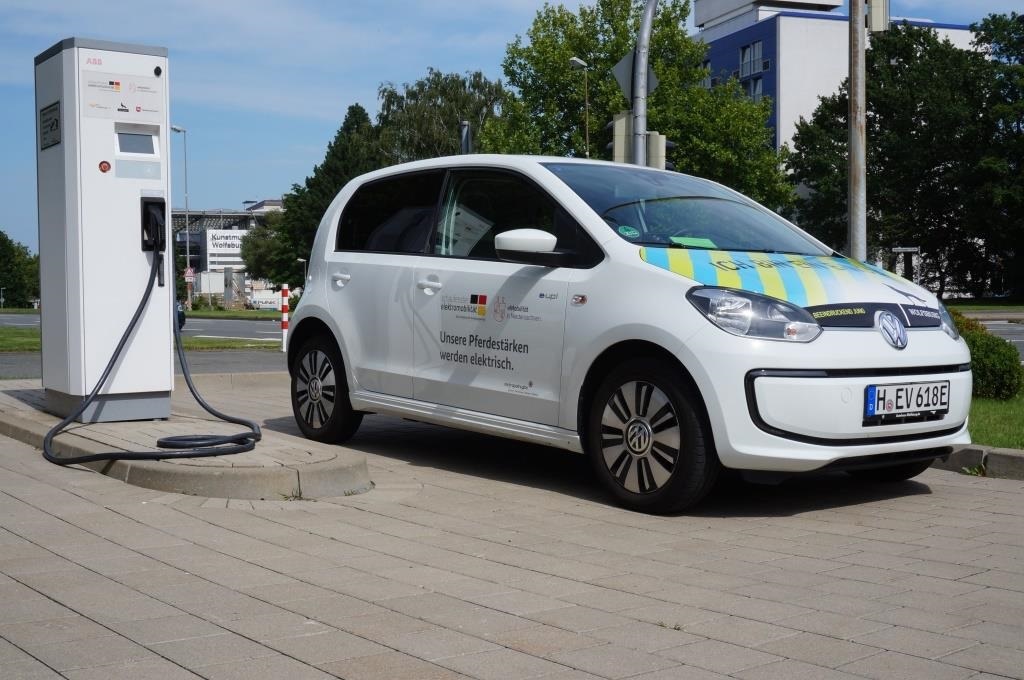
The city of Wolfsburg is committed to creating new mobility approaches and digital services for citizens and guests of the city with the help of electric mobility across all modes of transport. This will further improve the mobility options and quality of life in Wolfsburg. You can find out more about the city's goals and projects on this page.
-
E-Scooter in Wolfsburg
E-scooters can be a sensible and environmentally friendly addition to urban mobility, supplementing public transport as a feeder or inviting people to leave their cars behind for short journeys. The prerequisite for this is that certain rules are observed.
-
Which e-scooters are approved for road use?
Since summer 2019, e-trekkers (e-scooters) have been eligible for registration in Germany. This means that manufacturers of these so-called small electric vehicles have since been able to apply to the Federal Motor Transport Authority (KBA) for road traffic approval for their models. You can find out which models are currently registered at the KBA.
The conditions under which an e-scooter can be approved for road use are governed by the Ordinance on Very Small Electric Vehicles (eKFV). Only appropriately approved and insured models may be used by private individuals or rental companies within the scope of the Road Traffic Regulations (StVO).
Essential technical features of approved e-scooters:- Type approval by the KBA
- Maximum design speed of 20 kilometers per hour
- Stop and handlebars, lighting system, two independently operating brakes, bell
- Maximum power 500 watts or 1400 watts for self-balancing e-scooters
-
What general rules apply nationwide for the use of e-scooters on the road?
- You may ride on bike paths or bike lanes. If these are not available, the roadway may be used.
- Minimum age 14 years (no driver's license required)
- Wearing a helmet is not mandatory, but recommended.
- E-scooters require valid liability insurance and an adhesive license plate.
- The 0.5 per mille limit applies, or a limit of 0.3 per mille if one is no longer able to participate safely in road traffic under the influence of alcohol. For people under 21 years of age and driving license novices in the probationary period, even the zero alcohol limit applies.
- E-scooters may not be driven side by side.
- It is not permitted to carry people or objects on the running board.
-
Where in Wolfsburg is it allowed to drive and park?
- In Wolfsburg, it is permitted to ride on bike paths or bike lanes, analogous to the nationwide regulation. If these are not available, the roadway may be used.
- E-scooters may be parked in such a way that road users are not obstructed or endangered. The possibility of the e-scooter tipping over must also be taken into account. When parking at the edge of the sidewalk, a usable sidewalk width of at least 1.60 meters must be kept clear.
-
Where in Wolfsburg is it not allowed to drive and park?
- Bicycles are not allowed in pedestrian zones and on sidewalks. Bicycles are allowed to ride on them in case of a special designation (additional sign "Cyclists free") and if necessary within the designated times. This does not apply to e-scooters. Here, a separate release (additional sign "Elektrokleinstfahrzeuge frei", see pictogram) must be made.
- It is not permitted to drive or park in green areas (gardens, forests, parks, shore areas, roadside green areas, ...), with the exception of designated cycle paths.
- It is not allowed to ride or park in schoolyards and playgrounds.
- Parking is not permitted at public bicycle parking facilities (for example, bicycle racks).
- Accesses, entrances, exits and elevators to bus stops as well as shunting areas for public transport must be kept clear.
- Walking areas, especially with regard to accessibility for wheelchair users (lowered curbs, wheelchair ramps) and also guidance systems for blind and visually impaired people, must be kept clear.
- Crossing points (e.g. sidewalk extensions, median islands, set-up areas at traffic lights and crosswalks), access roads to properties (especially for the fire department, emergency services, police, areas for vehicles for waste disposal / street cleaning / winter services) and public parking spaces must be kept clear.
-
What applies to e-scooter rentals in Wolfsburg?
In principle, the operation of an electric scooter rental system by the city is not subject to approval. The regulations of the Ordinance for Small Electric Vehicles (eKFV) apply nationwide. However, initial experience from other cities shows that there can be conflicts when using rental systems, both in terms of the space required for parking and with other participants in moving traffic.
As the city of Wolfsburg would like to avoid conflicts in the operation of small electric vehicles as far as possible in advance, the city has formulated a voluntary commitment for providers of e-scooter rental systems. This is intended in particular to ensure road safety and an orderly cityscape, a good public image of the providers and a high level of acceptance of the service in Wolfsburg.
Voluntary commitment between the city and the respective providers
The rental companies define a business area and certain no-parking zones in agreement with the city and within the framework of the aforementioned regulations. These can be viewed in the provider's terms and conditions or in the respective app. The providers are responsible for operational implementation and compliance with the rules. Therefore, information about problems in operational processes, for example if parked scooters are obstructing other road users, should be addressed to the providers first.
Contact to the rental companies
DOTT
Phone: 030 56838651
E-mail to DOTTLIME
Phone: 069 77044733
E-mail to LIMEBOLT
Phone: 030 568373989
E-mail to BOLT -
Are e-scooters allowed on public transport?
In the buses of Wolfsburger Verkehrs GmbH (WVG) as well as in the entire area of the Verkehrsverbund Region Braunschweig (VRB), e-trekking scooters may be taken along according to the current status, if they are folded up and do not obstruct other passengers or the operation of the vehicle. They are then considered luggage and can travel free of charge. Rental scooters are currently not foldable and therefore may not be taken along. If scooters exceed certain dimensions (length over 1.15 meters, weight over 15 kilograms, wheel size over 9 inches), the regulations for bicycle transport apply and a bicycle ticket must be purchased for 2.50 euros.
-
Which e-scooters are approved for road use?
-
GEOLIS
The municipal system called "GEOLIS" shows where and what charging infrastructure is available in the city and where future potential lies.
Since the electromobility strategy was adopted in 2017, the city of Wolfsburg has been supporting electromobility and the expansion of charging infrastructure as a framework and funding body. The demand for charging infrastructure has been rising steadily ever since. Although the city of Wolfsburg does not install and operate public charging points itself, in 2019 it created an offer for the further development of electric mobility in the city. GEOLIS shows the number of publicly accessible charging points and the potential for new charging infrastructure on a map.
The methodology behind it: GEOLIS calculates an overall value from individual values of structural data, which are superimposed like layers, every 100 x 100 meters on the city map, indicating the potential for new charging infrastructure. A graphical representation - a so-called heat map - is generated from the respective total values, the color gradient of which is reminiscent of a thermal image. Deep red areas indicate a high potential for future, publicly accessible charging infrastructure. For the individual values, GEOLIS, which is based on the city's geoinformation system, draws on structural data: the population density in multi-storey residential buildings, the retail sales area, data on the number of transformers of the grid operator, the number of people employed at the place of work, parking spaces, the volume of traffic and the freeway junctions. If, for example, a 100 x 100 meter cell has many parking spaces, a high population density, a retail offer and sufficient electricity grid capacities, the total value (heat value) of the cell and thus the potential for new charging infrastructure increases. The values of a cell also influence the values of neighboring cells in order to enable practical circles around specific queries. For example, if there is a parking space near the freeway, this value is not only of interest within a 100 x 100 meter radius, but also beyond this radius to a lesser extent. Up to now, the individual values have been weighted equally, meaning that a parking lot is just as important for the overall value per cell as a retail offer. Experience with the system will show whether a different weighting is necessary.
Users receive the results by clicking on the desired location in the map view. This query in the GEOLIS heat map enables every user to see what location potential exists and on what basis the assessment was made.
The system is currently being updated and the map will be available again shortly.
The Data, Strategies, Urban Development department developed GEOLIS together with the Geoinformation Systems department of the City of Wolfsburg's Information Technology division.
-
Store
There are now over 780 publicly accessible charging points from various providers in many places in the city. The network is being continuously expanded. The city provides the framework and funding, e.g. by supporting planning or targeted approval procedures for investors of charging infrastructure in public spaces.
An overview of the charging points can be found on the website of the Federal Network Agency, for example.
-
#WolfsburgDigital: Wolfsburg as a hotspot for electromobility
#WolfsburgDigital: Wolfsburg as a hotspot for electromobility
In December 2016, the city of Wolfsburg and Volkswagen AG launched the joint #WolfsburgDigital initiative. The goals of #WolfsburgDigital are to increase the quality of life in the city through new and needs-based digital offerings and to further develop Wolfsburg as a sustainable business location.
The initiative comprises ten fields of cooperation. In the electromobility cooperation field, the goal has been defined of developing Wolfsburg into a major hotspot for electromobility. By 2025, 50 percent of the vehicle registrations in Wolfsburg are to consist of electric vehicles and a corresponding charging infrastructure is to be created.
-
Wolfsburg's electromobility strategy
In 2016, the city of Wolfsburg developed an electromobility strategy. It defines the city's goals and measures in the field of electromobility until 2025.
Electromobility is not understood solely as the electrification of drives, but as the initiator of more far-reaching changes in the mobility sector.
The city has identified twelve fields of action that will be addressed in the coming years. The goals of the strategy are to protect the population from local emissions, to protect the climate, and to further develop the city in a sustainable way with electromobility as an economic factor and a driver of changed mobility needs.
-
Charging infrastructure concept
Building on the electromobility strategy, the charging infrastructure concept addresses framework conditions, targets and measures for a needs-based expansion of the charging infrastructure in Wolfsburg.
In order to achieve the goal of 50 percent electric vehicles by 2025, a significant expansion of the charging infrastructure by investors is necessary.
The concept is based on the assumption that 85 percent of the charging needs will arise at home or at the employer's premises, i.e. where the vehicle is parked for a longer period of time. The remaining demand will be distributed among retail and commercial parking areas, parking garages, underground garages and public parking spaces.
-
e-cycle expressway Braunschweig - Wolfsburg
As part of a feasibility study, the Regional Association of Greater Braunschweig, the cities of Braunschweig and Wolfsburg, and Allianz für die Region GmbH have investigated the conditions under which an e-cycle expressway can be implemented on the axis between Braunschweig and Wolfsburg. The results show a very positive cost-benefit ratio.
In order to meet the changed functional and performance requirements of a steadily growing and in part accelerated bicycle traffic, including pedelecs, the network and infrastructure must be further developed in the future. To this end, the project partners are working on the next steps.
Comparable projects in the Netherlands or Denmark have shown that e-cycle lanes are very efficient and, if equipped appropriately, are very well accepted. Due to the strong traffic links between Braunschweig and Wolfsburg, a service could be created that shifts traffic from private motorized transport to the bicycle or pedelec.
More information about the e-cycle expressway
-
Alternative Green Route (AGR)
In the southeast of Wolfsburg, new mobility approaches are being pursued together with the new large residential quarters. On a dedicated lane, public transport is to bring residents and commuters quickly to the city center or to work on the "Alternative Green Route". The route offers good conditions for an electric bus line.
More information about the Alternative Green Route
-
Electromobility showcase: eCUBE
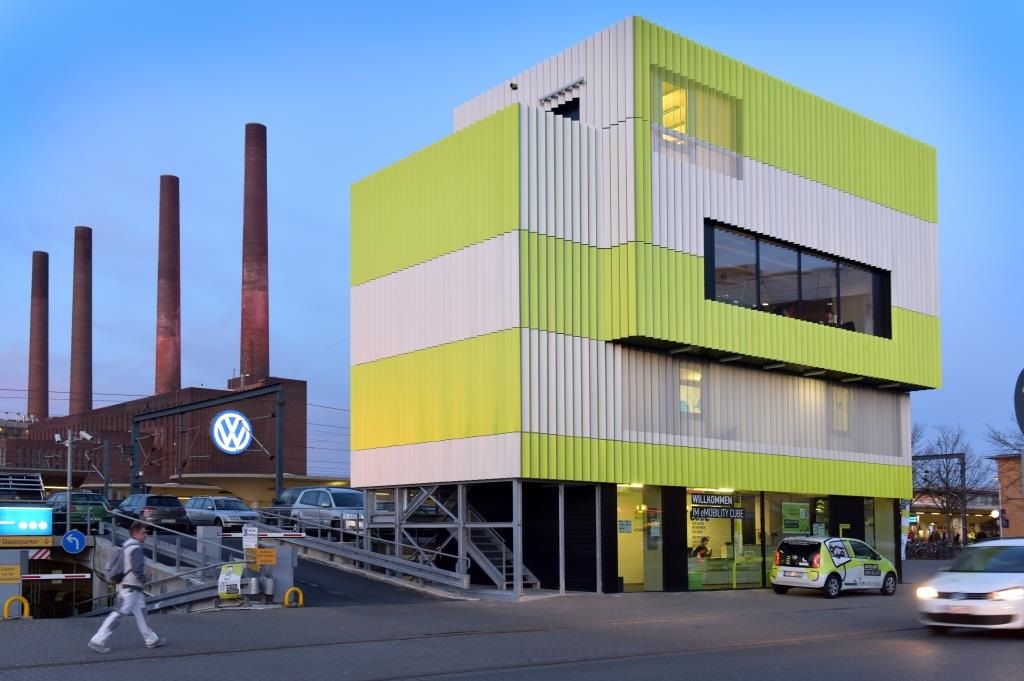 "eCUBE"©Lars Landmann
"eCUBE"©Lars LandmannAs part of the electric mobility showcase, the city has initiated a temporary mobility center. Several mobility offers and services (primarily from the field of "work") were interlinked within a new location.
The planning envisaged the construction of a temporary building in the immediate vicinity of the train station as the ideal location. Following the funding approval in February 2014, the implementation of the "eCUBE" began as an offer with car and bike sharing as well as short-term workplaces within the striking new building. Now that the project has been completed, the experience gained is being incorporated into the design of future mobility services.
Further information about the "eCUBE
